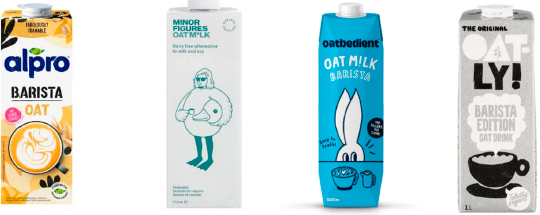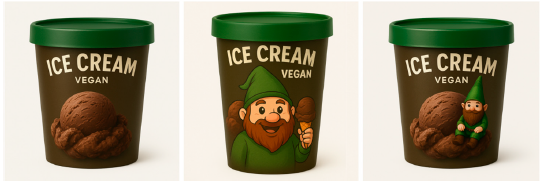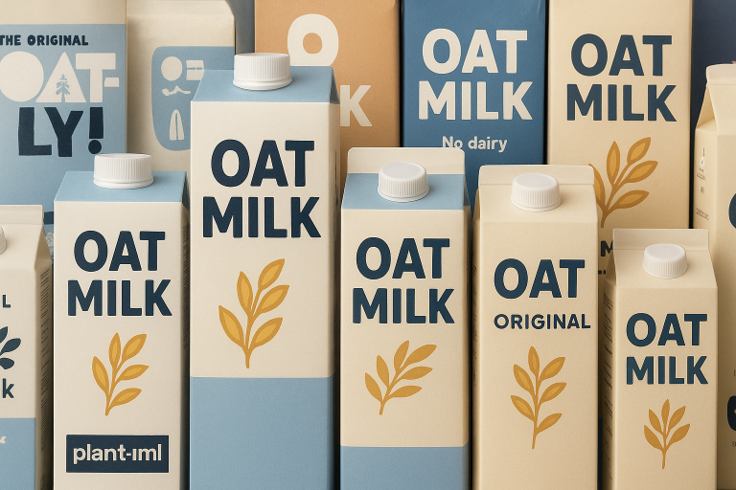It turns out those friendly faces aren’t just there to look cute. According to fresh research from the Slovak University of Agriculture in Nitra, mascots on packaging can meaningfully influence how we see plant-based foods – and even nudge us towards more sustainable choices.
The study, published in Sustainability, dives deep into a surprisingly under-explored question: in an age when we’re all talking about climate change, animal welfare, and plant-based diets, can a cartoon character really make a difference?
Why look at mascots?
The global food system is in the middle of a transformation. Calls to swap steak for soy or cheese for cashew are everywhere, and for good reason, shifting towards plant-based eating can reduce environmental impact, improve health, and address ethical concerns.
We know plenty about the nutritional and ecological benefits of plant-based diets. But we know less about how marketing visuals, especially mascots, might drive people to pick up that oat latte over dairy. Packaging is often the very first “conversation” a brand has with a shopper, and mascots have long been part of mainstream food marketing. Yet, in the context of sustainable consumption, they’re surprisingly under-researched.
Mascots, after all, aren’t just decorative doodles. They’re anthropomorphic brand ambassadors, part salesperson, part storyteller, capable of conveying trust, warmth, and personality at a glance.
The research in brief
The team surveyed 1,050 Slovak consumers aged 18–72, covering four generations. Respondents represented a good balance of men and women, and all kinds of diets, omnivores, flexitarians, vegetarians, and vegans.
The research had four key questions:
- How do people perceive oat milk brands, and does a mascot change that perception?
- Can we group consumers based on whether they value rational factors (like price and quality), visual factors (like design and mascots), or sustainability factors (like ingredients and eco-impact)?
- Do different consumer types prefer different mascot designs?
- Do dietary habits influence how much people care about mascots?
They tested real oat milk brands, Alpro, Minor Figures, Oatbedient, and Oatly, alongside fictional plant-based ice cream packs created with AI to control for bias.

Mascots do change brand perception
First up: Brand perception. People rated the visual appeal of the four oat milk brands, and the analysis revealed clear differences. Colour richness, illustration style, and, crucially, the presence of a mascot all factored into how each brand was viewed.
Minor Figures and Oatbedient, both using mascots, stood out in ways the mascot-free brands didn’t. The presence of a character created a distinct “visual identity” that influenced perceptions beyond just the logical details like ingredients or price.
Four types of plant-based shoppers
When it came to what really mattered in choosing plant-based products, the data split consumers into four clear groups:
- Balanced Idealists: They care about everything: price, quality, health, sustainability, packaging, and yes, mascots (they gave mascots the highest rating).
- Aesthetic Buyers: Drawn in by design. They love good packaging and appreciate mascots, but sustainability barely registers.
- Price-First Pragmatists: Wallet over whimsy. Price is king, quality matters, and visuals or eco-credentials barely get a look-in.
- Sustainability Advocates: Passionate about nutrition, eco-impact, and quality. Packaging design? Mascots? Not important, as long as the product’s values check out.
This segmentation alone is a gift for marketers: a reminder that there’s no “average” shopper or consumer, and one style of packaging won’t woo everyone.
Mascot preferences by personality
When shown the fictional ice cream packs, one with no mascot, one with a small mascot, one with a large mascot, different patterns emerged.

- Balanced Idealists loved the large mascot.
- Aesthetic Buyers liked both mascot versions, preferring a subtler touch over loudness.
- Price-First Pragmatists gravitated towards the no-mascot pack, perhaps seeing ornate designs as unnecessary frills.
- Sustainability Advocates were… well, neutral. Mascot or no mascot, their decision-making lived elsewhere.
The lesson? Mascots work brilliantly with certain audiences, but they’re not a universal charm spell.
Does diet make a difference?
Here’s the surprising twist: whether you’re a vegan or an omnivore, your feelings about mascots are pretty similar. Dietary identity didn’t meaningfully change how important people thought mascots were in their choices. That makes mascots a potentially universal marketing lever, one that cuts across lifestyle tribes.
So what’s the takeaway for brands?
The study’s authors see mascots as more than fun decoration. They can:
- Boost trust and recall – especially important for newer plant-based brands needing to stand out.
- Work as emotional shorthand – telling your brand story instantly through personality and visual cues.
- Nudge purchase intention – particularly among visually engaged segments like Balanced Idealists and Aesthetic Buyers.
That said, mascot magic works best when aligned with the target audience’s priorities. A cheeky, playful mascot could delight Aesthetic Buyers but might irritate Price-First Pragmatists if it feels like packaging fluff they’re paying for.
Tips for using mascots wisely
If you’re in the plant-based space (or frankly, any food category), this research offers a blueprint:
- Know your audience segment – Don’t just design for “everyone”. Balanced Idealists? Go bold. Aesthetic Buyers? Elegant charm.
- Test variations – Run A/B trials with mascot presence, size, and style to see what moves the needle. We have as fantastic design effectiveness tool. message us for more information.
- Stay authentic – For eco-driven shoppers, make sure the mascot reflects your sustainability values rather than looking like greenwashing.
- Track real-world impact – Measure not just clicks and likes, but dwell time on product pages, basket adds, and repeat buys.
Why mascots matter in sustainability
Mascots aren’t a replacement for credible environmental credentials, but they can help bring them to life. A well-designed character can embody health, nature, or community values, turning abstract sustainability concepts into relatable, memorable stories.
And because they seem to appeal across dietary lines, mascots could be a valuable ally in mainstreaming plant-based options, reaching beyond the “already converted” to tempt the simply curious.
Final sip
This research is a reminder that in the battle for shopper attention, especially in the crowded, fast-growing plant-based aisle, visual storytelling is powerful. Mascots might seem playful, even frivolous, but when done well, they’re a strategic asset.
In other words: don’t underestimate the little cartoon on the carton. It might just be the reason someone tries oat milk for the first time… and keeps coming back for more.






